Known as a national treasure in Japan, Akitas have wooed American dog-lovers with their loyalty, watchfulness, and graceful strength. Learn more about living with the Akita.
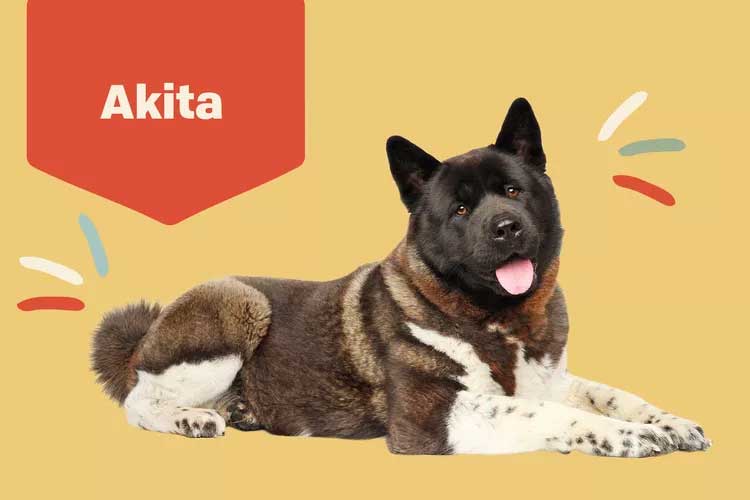
Akita Overview
| OFFICIAL NAME | Akita |
| COMMON NAME | Akita |
| PET HEIGHT | 24 to 28 inches |
| PET WEIGHT | 70 to 130 pounds |
| LIFESPAN | 10 to 13 years |
| GOOD WITH | children, families, seniors |
| TEMPERAMENT | aloof, gentle, willful |
| INTELLIGENCE | high |
| SHEDDING AMOUNT | seasonal |
| EXERCISE NEEDS | medium |
| ENERGY LEVEL | calm |
| VOCAL LEVEL | quiet |
| DROOL AMOUNT | medium |
| BREED GROUP | working |
| BREED SIZE | large (61-100 lbs.) |
| COAT LENGTH | long |
| COLORS | black, blue, brown / chocolate / liver, cream, fawn, gold / yellow, gray, red, white |
| PATTERNS | bicolor, black and tan, blue and tan, brindle, liver and tan, tricolor |
| OTHER TRAITS | cold weather tolerant, easy to train, highly territorial, high potential for weight gain, high prey drive, prone to health issues, requires lots of grooming, strong loyalty tendencies |
The Akita—a large, dignified dog breed—has roots in Japan, where he is considered a national treasure. Originally trained to hunt wild boar and even bears in the mountains, the muscular Akita is brave and determined. While he's not especially common in the U.S., the Akita quickly illustrates to those who choose to adopt him that he makes a loyal family companion when well-trained.
Beneath the Akita's dignified demeanor is a playful and affectionate side reserved for his owners. "When you look at it, it's like, 'Oh my gosh, how cute, how fluffy, it's so quiet,'" says Baruch Caballero, DVM, an emergency veterinarian at the Veterinary Specialty Center in Buffalo Grove, Ill. It's important to do your research before bringing home any breed, including the big, furry Akita.
Appearance
The Akita puppy, with his fuzzy coat, rounded frame, and disproportionately enormous paws, invites plenty of "awws." But he grows into a sizeable adult. "They're a pretty sturdy breed, that's for sure," Caballero says.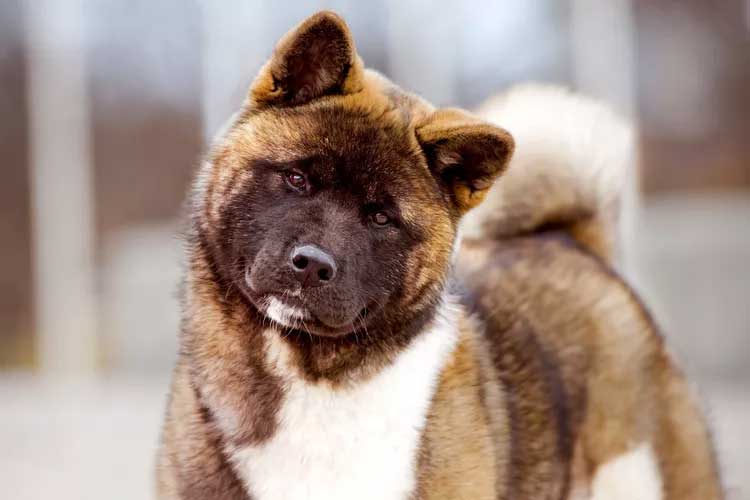
The height of an American Akita ranges from 24–28 inches at the shoulder, and the breed can weigh between 70–130 pounds. He has a massive head with a broad muzzle, pointy ears, and small, deep-set brown eyes. His thick double coat, which sheds minimally and needs regular brushing, can be any color, including white, brindle, or pinto, with well-defined markings across his burly body. The Akita's distinctive tail raises over his back in a fluffy curl.
The Japanese Akita, known as the Akita Inu, looks similar to the American Akita but tends to be more petite. Another difference between them is that the American Akita can be any color, while the Japanese is usually red, brindle, or white. While the Japanese Akita is sometimes confused with the Shiba Inu in terms of appearance, it's easy to tell them apart in terms of adult size: the Akita is large, while the Shiba Inu is a small breed.
A number of Akita mix breeds are also available, including a Labrakita (Labrador retriever plus Akita), shepkita (German shepherd plus Akita), and Akipoo (Akita plus poodle), to name a few.
Temperament
Large and in charge—that's the Akita. "It's a working breed, but it was bred to actually hunt and protect houses back in the day in Japan," Caballero says.He adds that the Akita can be an excellent family dog, especially if trained early and consistently. The Akita can get along well with familiar children, preferring to be around his humans as much as possible. However, he tends to be aloof toward strangers. Because Akitas bond so closely to their families, they might be happiest as the house's only fur child (they can get jealous if you give too much love to another dog!). But, if introduced in puppyhood, Akitas can live alongside household cats and dogs well.
Living Needs
With their thick coats and hardy history, Akitas love spending time outside, and a fenced yard where they can roam and sniff is ideal. "If they're outside in the yard, what you'll see is they'll sniff around and then find a spot and lay down and [survey]," Caballero says. "They're not tongue-out, waiting for you to throw the ball."Akitas live for cold weather, and when it comes, they'll zoom around in the snow (they even have slightly webbed toes that help them walk on snowy drifts), eating it and rolling around to their hearts' content.
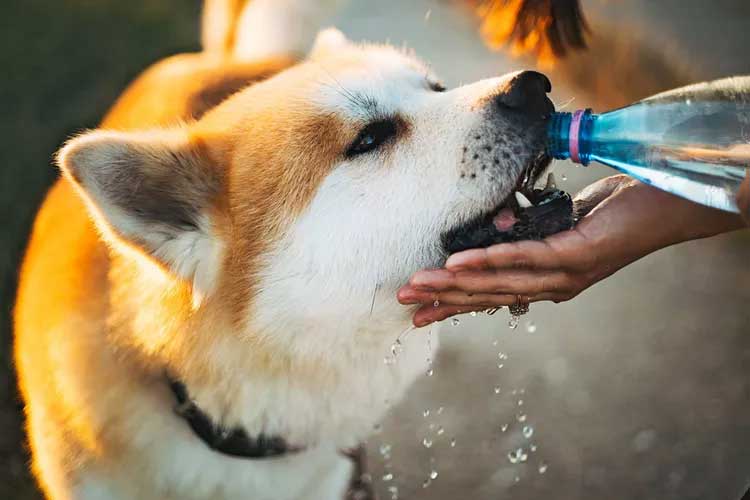
Indoors, they're happy to follow their owner from room to room, or watch them from the floor. The Akita has a strong prey drive, so he should always be on-leash and under watchful eyes when outside. This breed is relatively quiet, and barking usually isn't an issue unless the dog is alerting its family to a visitor or something unfamiliar.
Care
The Akita has a reputation for being fairly odorless, but if he's spending a lot of time outside his coat can get dirty, and it will need to be brushed and groomed frequently. "A clean Akita doesn't smell. But an Akita that [loves the] outside is going to smell," Caballero says. "That's why grooming them is important."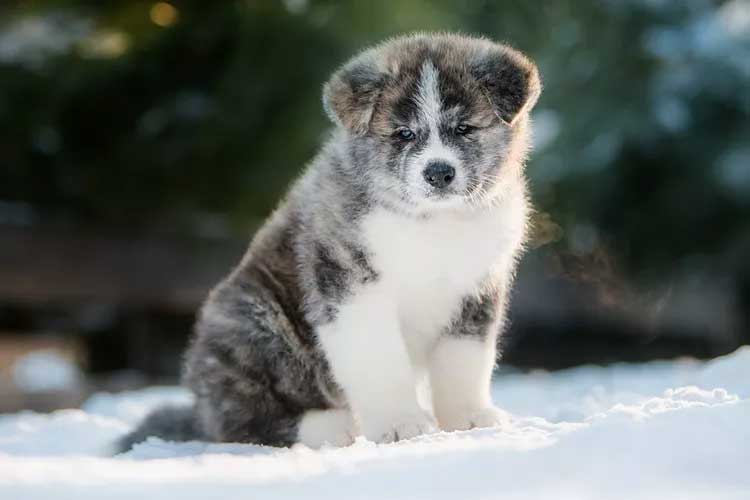
The Akita's thick coat sheds minimally throughout the year until warm weather hits, and then—look out! The once-a-year shedding, aka coat blowing, is sure to cover the entire house. Regular nail trimming and teeth brushing are also important to an Akita's health.
This breed requires moderate exercise, and if he's not getting that from roaming around in the yard, a daily jog or long walk will suffice. "Just like in humans, a walk outside is mentally calming and relaxes them and exercises them," Caballero says. "This breed can gain weight pretty quickly if they're pretty sedentary. If they're at home not doing much, getting treats, laying around? They're going to get overweight."
Training should start early and happen frequently—calmness, consistency, and positive reinforcement are key—because these fluffy puppies grow into large, strong, independent-minded adults. "The main thing with this breed is you're going to have to be super [consistent] in training it as a puppy," Caballero says. The good news: Akitas have a reputation for being easy to potty train!
Health
For a large dog, the Akita's lifespan is long, at 10–13 years. However, the breed is prone to a number of health conditions, including hip dysplasia, arthritis, hypothyroidism, and eye problems.According to the Akita Club of America, the Akita is also prone to gastric dilatation-volvulus (GDV) or bloat, which is a life-threatening emergency that occurs when the dog's stomach twists and cuts off blood supply.
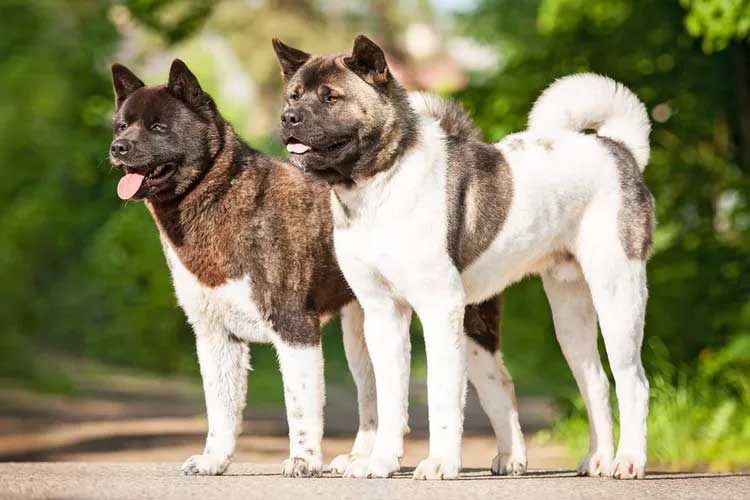
Caballero recommends Akita puppy owners consider a surgery called gastropexy, where the side of the stomach is tacked to the abdomen wall so it can't flip. "If I get one of those breeds, that would be the first thing I would do to prevent them from twisting the stomach," he says. "Because [if your dog experiences GDV] you go to the ER and you spend $8,000–$10,000 in surgery."
Akita owners should talk to their veterinarians about preventive options for health risks their own dogs may face.
History
The Akita is named for the Akita prefecture in Japan, where his lineage can be traced back to the 17th century. According to the Akita Club of America, there's evidence of the Akita dating back to the Jōmon Period (14,000–300 B.C.). Though they were bred as strong, hard-working hunting dogs the Akita came to be regarded for his loyalty.
As hunting became less common, the breed transitioned into the role of loveable family companion with his dignified demeanor and affection. Now, they are one of seven dog breeds designated as a natural national monument in Japan. According to the breed club, Akita have a spiritual significance, too, and are seen as a symbol of good health.
The Akita first made his way to the U.S. in 1937, when Helen Keller brought a pup named Kami home after a tour through Japan. The Akita remained a rarity in the U.S. until after World War II, when returning American soldiers brought them from overseas. The breed was officially recognized by the American Kennel Club in 1972.
Fun Facts
In Japan, the Akita is so revered that the family of a newborn child is often presented with a statue of an Akita, which symbolizes health, happiness, and long life.In the Akita prefecture of Japan, where the dog originated, visitors can meet Akita dogs at a number of different businesses, including the Akita Dog Museum, the Akita Dog Visitor Center, the Ani Ski Resort, Furusawa Hot Springs, and the Royal Hotel Odate.
Helen Keller fell in love with this breed after reading the story of famous Akita Hachiko, who faithfully waited nearly 10 years at a train station for his owner's return, unaware the owner had—in fact—passed away. When Keller traveled in Japan in the 1930s to teach, she mentioned her interest in adopting one of these faithful dogs, and the Japanese government took her request to heart; when Keller returned to the U.S., she was accompanied by an Akita.
Some celebrity Akita pet parents include Henry Cavill and his American Akita named Kal. Sarah Michelle Gellar and Freddie Prinze Jr. also have their adorable Akita Inus Kumi and Sato.